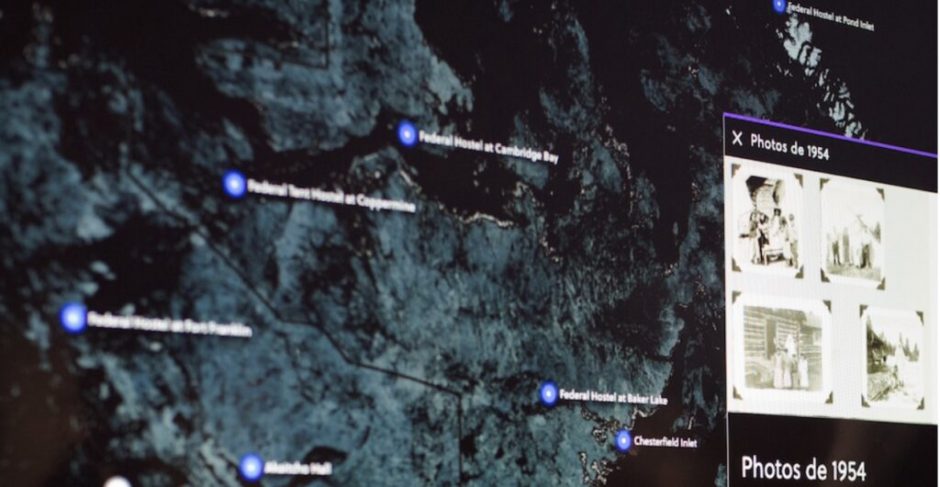
The Indian Residential School History and Dialogue Centre (IRSHDC) is developing innovative technologies that support learning and listening. The exhibition space includes an interactive touchscreen wall that invites visitors to explore the history and ongoing legacy of the residential school system through multiple pathways. The interactive wall provides access to the IRSHDC records and collections through the following features: timeline, map, browse and nodes.
The interactive wall is a starting point for viewing the digital materials. It provides multiple perspectives on the residential school system to encourage continued engagement and learning. Explore the interactive touchscreen wall to find records, learn about residential schools and listen to voices from across the country as individuals share their stories.
Timeline
While linear time is one particular representation of the residential school system narrative, it is a powerful reminder of the extensive and enduring legacy of the residential school system in Canada.
The timeline provides a background on the historical origins, development, and continued effects of the residential school system. Through the timeline feature, visitors can see when schools opened and closed, as well as what else was happening at the same time.
The timeline extends beyond the official dates of the residential school system. Earlier dates help explain the context of the residential school system within Canadian colonialism and nation-building. While the last schools closed in 1996, the timeline continues to the present to reflect the continued effects of settler colonialism, intergenerational trauma and ongoing work towards reconciliation.

Map
Use the map to see the geographic scope of residential schools included in the Indian Residential Schools Settlement Agreement and some events from the Truth and Reconciliation Commission.
Browse
Use the browse feature to look at curated topics, such as videos from TRC events, or explore highlighted people or dates.
Nodes
The Nodes feature allows users to browse the collections via intertwined themes. Each category, or node, shows records/materials related to that topic, for example, Health or Sport. This visual representation of the digital collections highlights ongoing issues affecting Indigenous peoples, stemming from colonialism and residential schools.
Can’t come to the Centre in person? All of the records available on the wall are also available online, via the collections portal.
Download as a PDF.
Learn more about the wall from IRSHDC partner and developer Logic&Form.